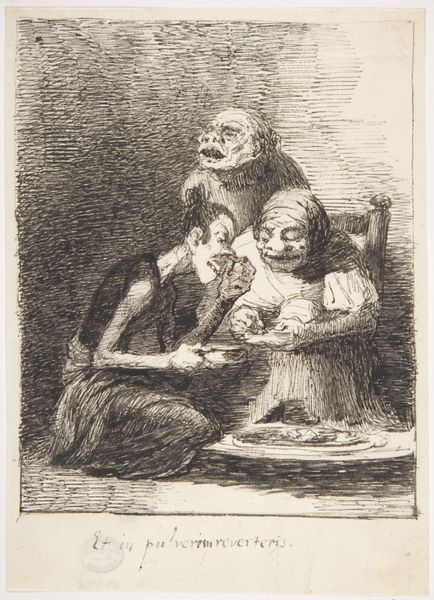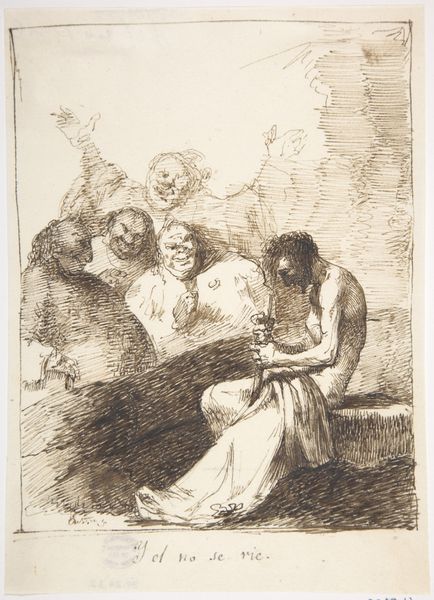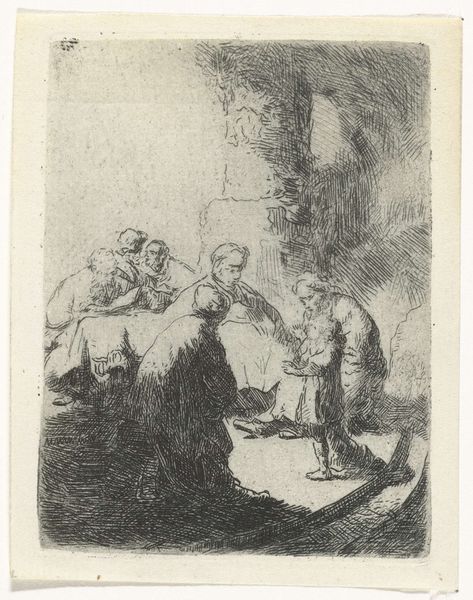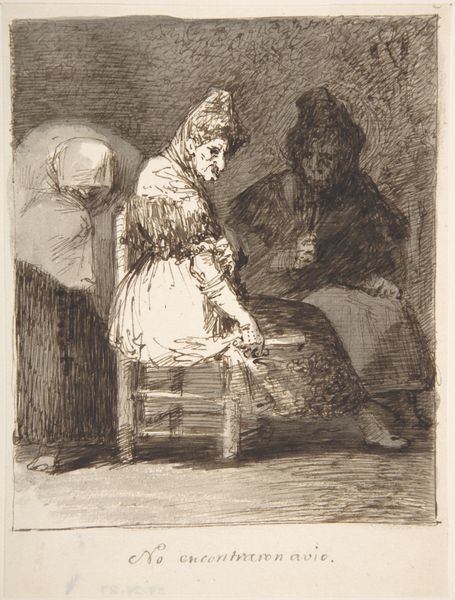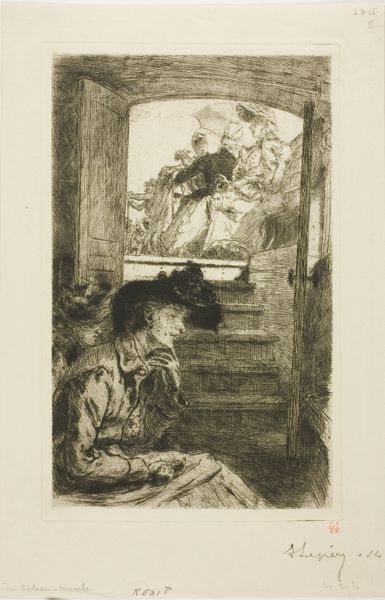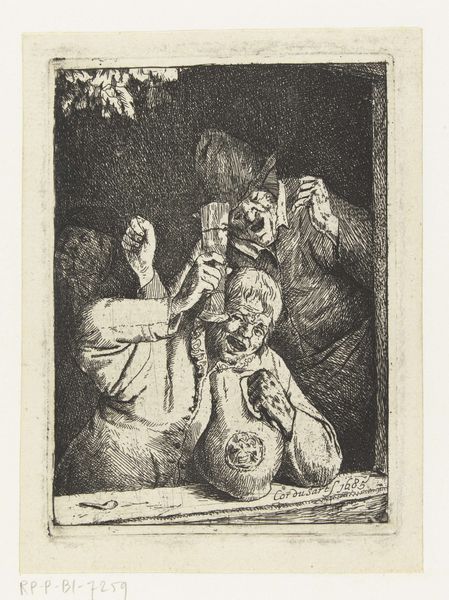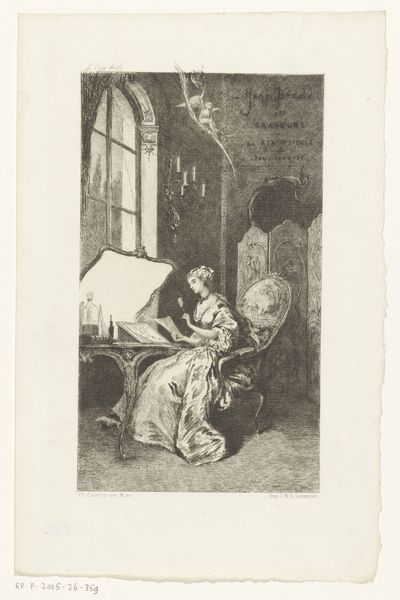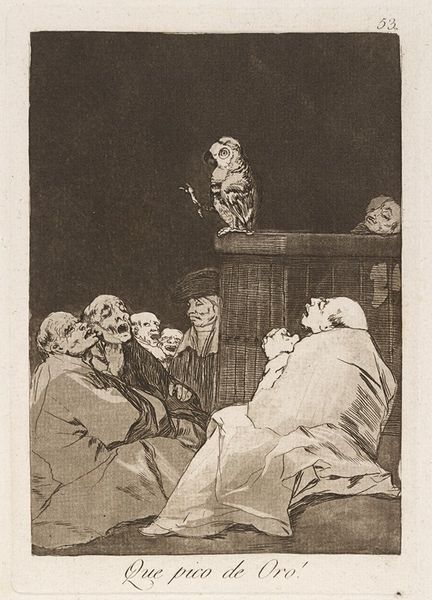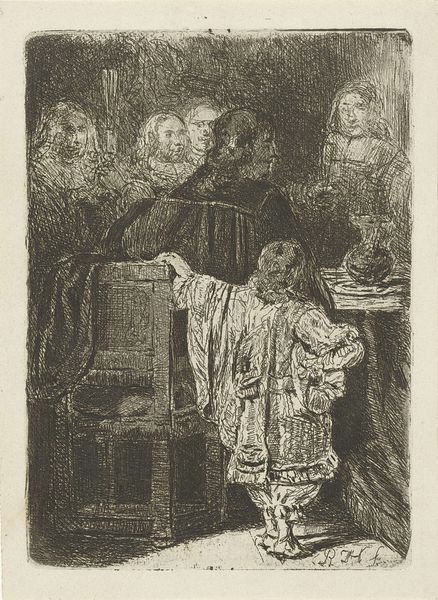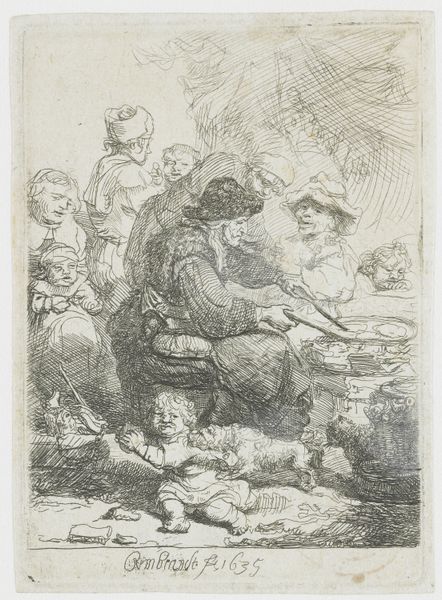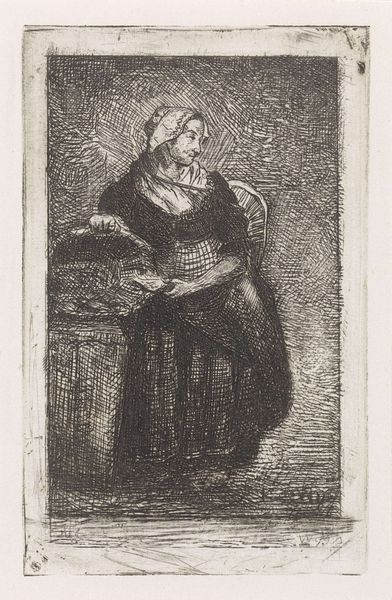
drawing, print, etching
#
drawing
#
narrative-art
# print
#
etching
#
caricature
#
figuration
#
romanticism
Dimensions: 7-1/8 x 5-1/8 in. (18.1 x 13.0 cm)
Copyright: Public Domain
Curator: Here we have Leonardo Alenza's "Ex Cathedra," an etching made sometime between 1807 and 1845, now residing at the Metropolitan Museum of Art. What's your immediate take on it? Editor: Bleak and strangely unsettling. The crude cross-hatching gives it a stark feel, and the subject matter—this figure with the head of a dog holding court before such an... interesting crowd is undeniably bizarre. Curator: The title, "Ex Cathedra," alludes to the concept of speaking with papal authority. So, considering the political climate of early 19th-century Spain—specifically the crisis of the Bourbon monarchy—this image clearly satirizes the established powers of the Church. Editor: Right, and look at the platform the dog-figure sits upon! That's not some holy throne, that looks more like a sturdy chest that seems central to the composition, suggesting perhaps the material foundations of the speaker's supposed authority. The means, perhaps, justify the ends? Curator: A pointed contrast indeed, highlighting the hypocrisy Alenza perceived within religious institutions. Notice too how Alenza deliberately rendered the audience—such unflattering figuration is clearly poking fun at those who blindly accept the so-called teachings. Editor: And there's a second layer of spectators peering from that window; like the whole system of power relies on public performance for those in attendance and for others who are viewing at a remove, who are not afforded entry. It does make me consider the nature of etching, though; all those repetitive lines, etched and printed. Does this painstaking craft reflect the labor inherent to upholding these power structures? Curator: Undoubtedly, the etching technique itself can be read as a deliberate choice, reflecting Romanticism’s focus on expressing emotion. It heightens the sense of disillusionment so typical of that historical period. The print medium allowed for widespread dissemination of this social critique. Editor: So the artist strategically utilizes this readily made, mass medium as the very thing used to critique those in charge. Intriguing paradox. This detailed, laborious method to depict and subvert these established social functions... it is something to consider. Curator: Absolutely, Alenza really forces us to consider the messy entanglement of faith, power, and the very ways those dynamics function within the public sphere. Editor: The work has given me a fresh perspective on art's relationship with process. I might walk away viewing etching not just as medium but as its own form of social critique.
Comments
No comments
Be the first to comment and join the conversation on the ultimate creative platform.
